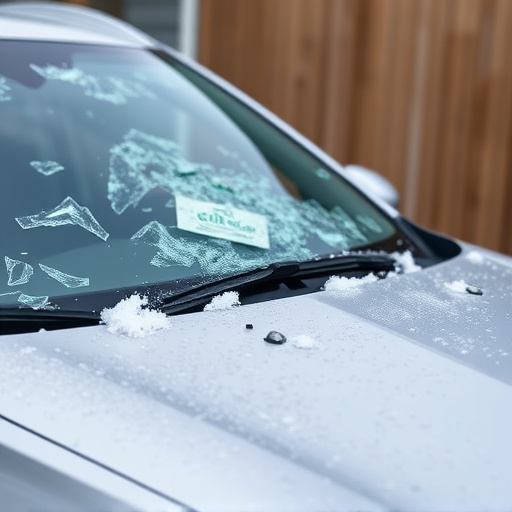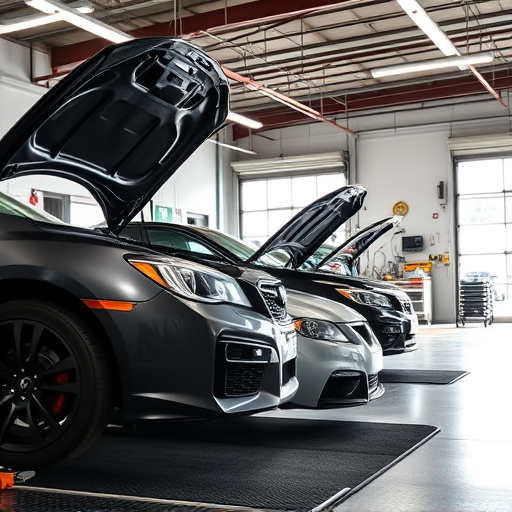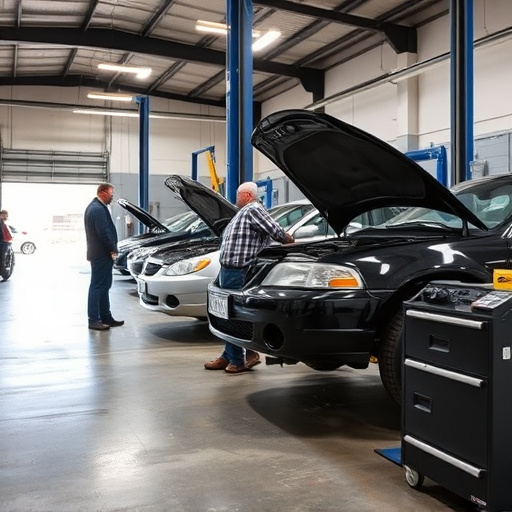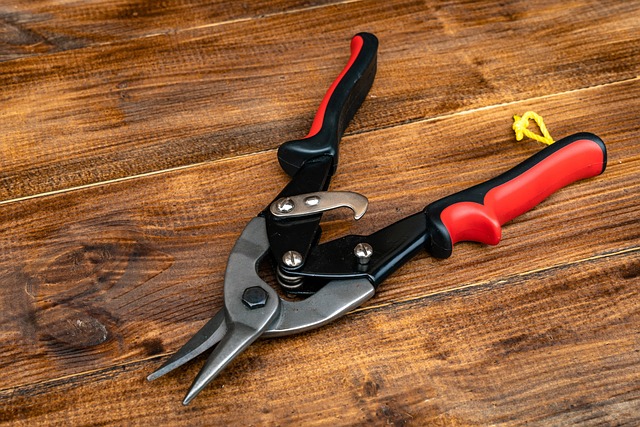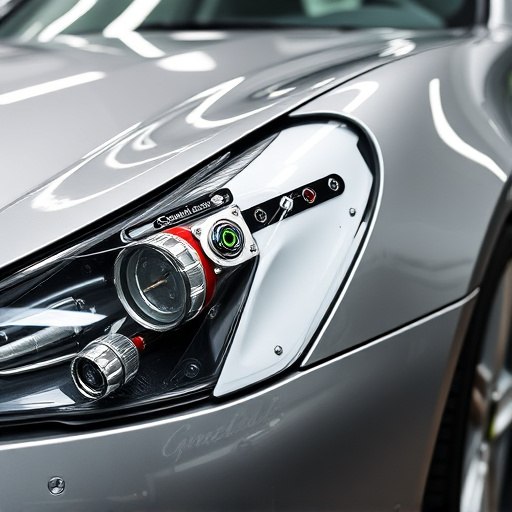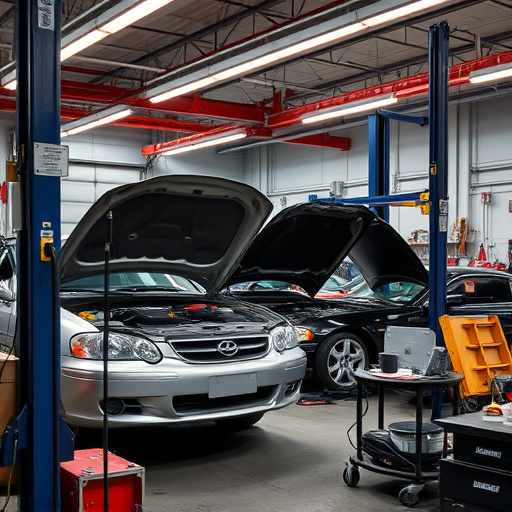Mercedes ADAS calibration is a critical process ensuring the proper functioning of advanced driver-assistance systems, including lane keeping assist and automatic emergency braking. It involves simulating driving scenarios, adjusting sensor parameters, and integrating data into vehicle software. Regular collision center visits are essential to preserve this delicate calibration after car body repairs. Accurate setup guarantees safe and effective steering assist, with skilled technicians fine-tuning sensors and algorithms for optimal performance. Maintaining precise Mercedes ADAS calibration is vital for driver safety and the efficient operation of advanced driver assistance features.
Mercedes’ Advanced Driver Assistance Systems (ADAS) rely on precise steering assist integration for safe and effective operation. This article delves into the intricate world of Mercedes ADAS calibration, exploring its critical role in ensuring optimal system performance. We’ll uncover the steps involved in the calibration process, highlight the significance of accurate integration for driver safety, and provide best practices to maintain reliable steering assistance. Understanding these aspects is crucial for vehicle dynamics enthusiasts and professionals alike.
- Understanding Mercedes ADAS Calibration Process
- Importance of Accurate Steering Assist Integration
- Best Practices for Effective System Calibration
Understanding Mercedes ADAS Calibration Process

Mercedes ADAS calibration is a complex yet critical process that ensures the seamless integration and optimal performance of the brand’s advanced driver-assistance systems (ADAS). This involves meticulously adjusting and fine-tuning various sensors, cameras, and software components to achieve precise steering assist capabilities. By calibrating these systems, Mercedes vehicles can accurately perceive their surroundings, enabling features like lane keeping assist, adaptive cruise control, and automatic emergency braking.
The process involves several steps, beginning with the setup of a specialized calibration rig that simulates real-world driving scenarios. This is followed by the adjustment of sensor parameters, ensuring they provide accurate data for system mapping. Advanced tools then integrate these data points into the vehicle’s software, allowing the ADAS to react appropriately to different driving conditions. Regular collision center visits and collision repair services play a vital role in maintaining this calibration, as they ensure that any damage or adjustments made during car body restoration do not disrupt the delicate balance of these safety systems.
Importance of Accurate Steering Assist Integration

The integration of the steering assist system is a critical aspect of modern vehicle safety, and accurate calibration plays a pivotal role in ensuring its effectiveness. In Mercedes vehicles equipped with Advanced Driver-Assistance Systems (ADAS), precise calibration is not just desirable—it’s essential. An improper setup can lead to inconsistent or incorrect responses from the system, potentially compromising driver safety during critical driving situations.
Accurate steering assist integration means that the ADAS sensors and software work in harmony, providing seamless assistance when needed. This includes proper alignment of cameras, lidar, and radar sensors, as well as fine-tuning the control algorithms to ensure the system reacts appropriately to road conditions and driver inputs. Just like a car restoration project requires meticulous attention to detail, Mercedes ADAS calibration is an intricate process that demands skilled technicians to achieve optimal performance and safety standards.
Best Practices for Effective System Calibration

Maintaining accurate Mercedes ADAS calibration is paramount for ensuring the seamless integration of the steering assist system. Best practices involve regular, systematic checks to verify that all sensors are functioning optimally and aligned correctly. This includes performing frame straightening services when necessary, as any deviation can impact sensor readings, leading to potential safety hazards.
Additionally, utilizing top-notch car paint services and meticulous dent removal techniques is crucial for preserving the vehicle’s structural integrity and aesthetic appeal. A well-maintained chassis, free from damages or deformities, ensures precise calibration, thereby enhancing the overall performance and reliability of Mercedes’ advanced driver-assistance systems (ADAS).
Mercedes ADAS calibration is a critical process that ensures the seamless integration and optimal performance of the steering assist system. By understanding the calibration process, implementing best practices, and maintaining accurate integration, vehicle manufacturers can deliver enhanced safety features that meet the highest standards. Accurate Mercedes ADAS calibration not only improves driver confidence but also plays a pivotal role in navigating the evolving landscape of autonomous driving technologies.


